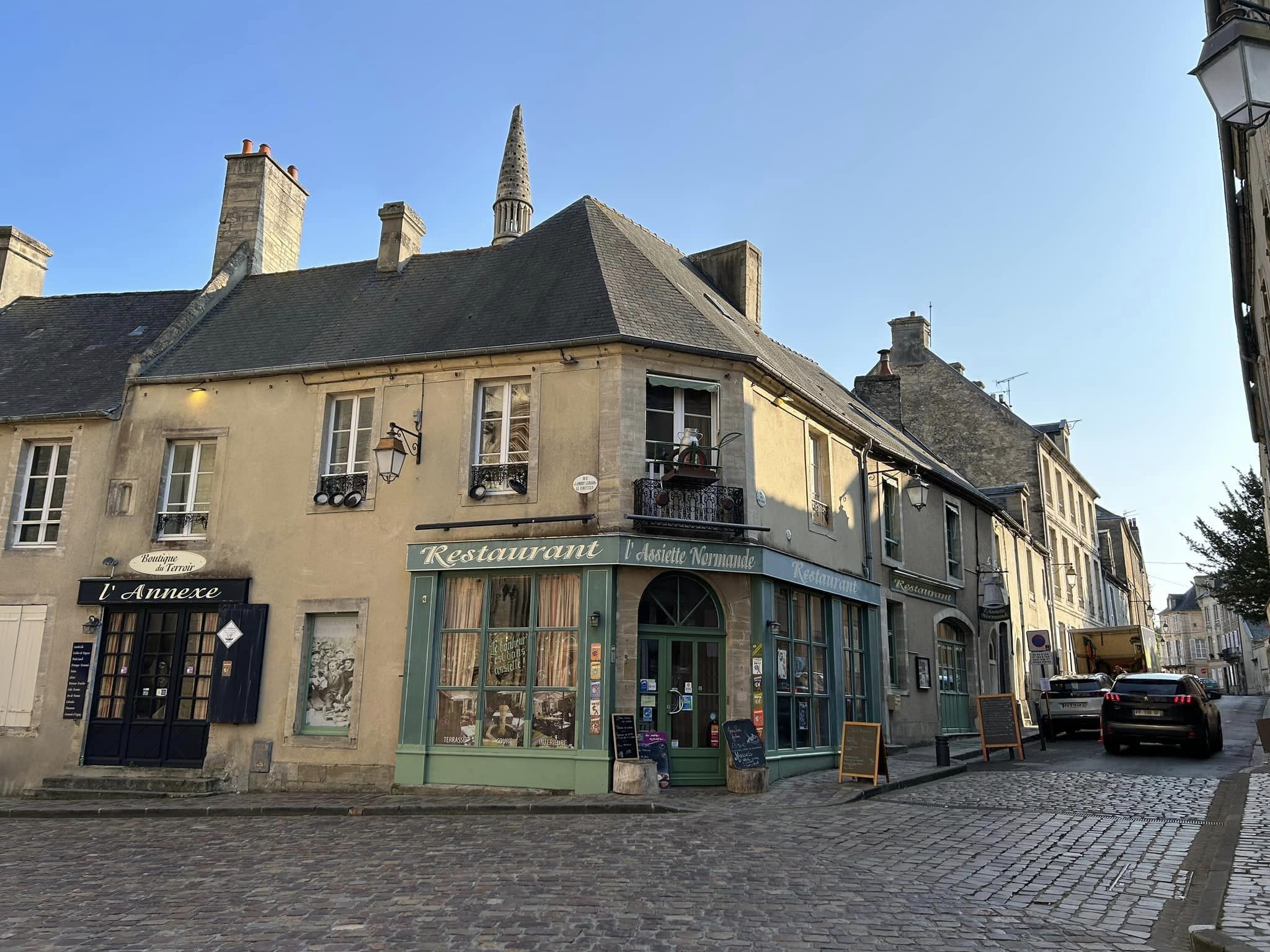I’m in the middle of a three week treck to visit historical sites, museums and more of WWII. One of my best friends and I have been planning this trip forever!
I wanted to share some of the adventures with you, and if you’d like to see more photos you can join my reader group on Facebook.
Day 1 of my WWII Tour
We drove from The Netherlands to Bayeux in Normandy, a gorgeous, old city with a spectacular cathedral in the center. This will be our home this week from which we’ll explore all the WWII history of Normandy. It also has a famous tapestry, which we’ll check out later this week.
After checking in into our Bed and Breakfast, we walked around in the city center for a bit and saw the cathedral. As always when visiting a church, I lit a candle in remembrance of my dear friend Susi Hawke, who is so deeply missed. Yesterday marked a year since she passed away, and not a day goes by that I don’t think of her. By lighting a candle for her wherever I visit, it feels like she’s traveling with me, and that’s a lovely thought…

Our Bed and Breakfast is lovely, and I impressed myself by how much of the French of our hostess I understood. Speaking is difficult, as my head is already full with Dutch, English, and German, but I understand it just fine if they don’t go too fast.
Day 2 of my WWII Tour
We had a fantastic first full day here in Normandy. The theme of the Day was the “Atlantic Wall”, the defenses the Germans had built along the entire coastline from France all the way to Norway. These consisted of massive fortifications like pillboxes, bunkers connected by trenches, clematis, and much more. Luckily for the Allies, not everything was fully finished in June 1944…

We started in Ouistreham, where we visited a German “Flachturm”, a defense tower with anti-aircraft guns on the roof. Several stories high, it had a formidable line of sight on the beach and any incoming ships.
Next up was the beach of that same town, where some of the old defenses are preserved, namely “dragon’s teeth”. They’re much smaller now and small in number, but these were built all along the coast to prevent landing crafts from landing.
Then we headed to the famous Pegasus Bridge, which was a crucial bridge over the Caen Canal that British paratroopers secured early on D-Day in a brilliant operation. The original bridge has been removed and preserved in a museum, and there’s a new, similar bridge over the canal now. That museum also showed one of those gliders the British used to land on D-Day, and holy crap, you need balls of steel to get into those. Mad respect.
The Hillman battery consist of the remains of a German stronghold of several bunkers, connected by trenches, a few kilometers inland from the coast, but with view over the sea. Their guns had enough range to hit the beaches.

And our last stop was a similar complex, though much bigger and better preserved and restored, called the Merville Battery. The original plan to capture this counted on 600 British men, plus a lot of weapons and support. Because the British paratroopers landed all over the place, they ended up with only 150…but still got the job done. Half of them perished, but the battery was silenced in the crucial hours of D-Day, where it could have hit the men storming the beaches.
The weather was perfect and we had a fantastic day and a great start to our trip.


0 Comments